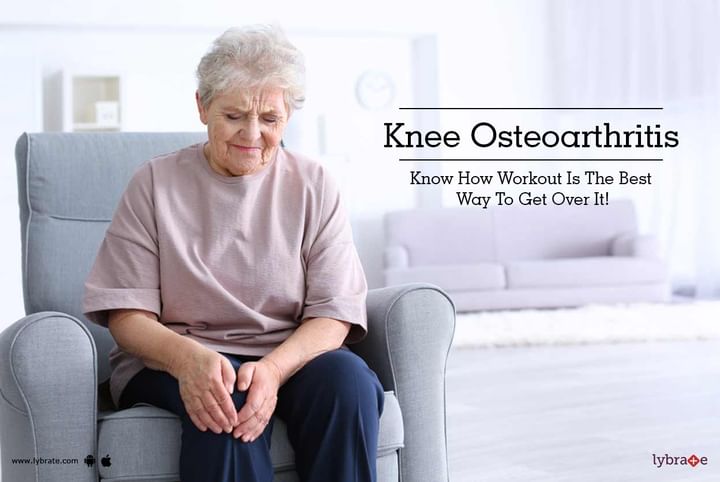Knee Osteoarthritis - Know How Workout Is The Best Way To Get Over It!
What is Osteoarthritis of Knee?
Osteoarthritis of the knee (knee OA) is a progressive disease causing inflammation and degeneration of the knee joint that worsens over time. It affects the entire joint, including bone, cartilage, ligament, and muscle. Its progression is influenced by age, body mass index (BMI), bone structure, genetics, strength, and activity level. Knee OA also may develop as a secondary condition following a traumatic knee injury. Depending on the stage of the disease and whether there are associated injuries or conditions, knee OA can be managed with physical therapy. More severe or advanced cases may require surgery.
Symptoms of knee OA may include:
- Worsening pain during or following activity, particularly with walking, climbing, or descending stairs, or moving from a sitting to standing position
- Pain or stiffness after sitting with the knee bent or straight for a prolonged period of time
- A feeling of popping, cracking, or grinding when moving the knee
- Swelling following activity
- Tenderness to touch along the knee joint
Physiotherapy For OA Knee
Here are 5 exercises to help you take control of your knee OA. These exercises are recommendations. Before doing them, get your doctor's okay. Never push through pain with these exercises—you may be doing your joints more harm than good. Soreness is normal when starting an exercise program, but if it doesn't go away, call your doctor.
1. Knee OA Exercise #1: Standing Quadriceps Stretch
Stretching your quadriceps can ease tension in the knee joints.
- Stand with feet hip-distance apart.
- Bend your right knee and hold the top of your right foot with your right hand.
- Bring your right heel as close as possible to your glutes. You can use a wall for balance.
- Hold for 30 seconds, and repeat on the left leg.
- Do 3 times once a day.
Knee OA Exercise #2: Standing Calf Stretch
This gentle calf stretch increases flexibility in your leg muscles and knee joints.
- Bring your right foot a few feet in front of your left foot. Bend your right leg, making sure your knee doesn't go past your toes.
- Keeping your left leg straight, press your left heel toward the ground to stretch the calf of your back leg.
- Hold for 30 seconds. Repeat on opposite leg.
- Do 3 times daily.
Knee OA Exercise #3: Seated Leg Raise
The seated leg raise exercise helps strengthen muscles around your knees.
- Sit on a chair with both legs bent at 90°.
- Slowly raise your right leg so that it's parallel to the floor, keeping your left foot on the ground.
- Hold for 30 seconds, then slowly bring the right foot back to the floor, and repeat on left leg.
- Do 10 times twice a day.
Knee OA Exercise #4: Step-ups
Step-ups strengthen your legs, making it easier for you to do everyday things like climb stairs. You'll need an exercise step, or use a bottom stair in your house.
- Stand in front of the stair with feet hip-width apart.
- Step onto the stair with your right foot, then with your left foot.
- Step down in reverse: Your left foot reaches the ground first, then the right foot.
- Go at your own pace for about 30 seconds at a time. For balance, use a railing.
- Do 10 times twice a day.
Knee OA Exercise #5: Static Quadriceps Contraction
- With your knee relatively straight, slowly tighten the muscle at the front of your thigh (quadriceps) by pushing your knee down into a small rolled up towel.
- Put your fingers on your quadriceps to feel the muscle tighten during the contraction.
- Hold for 5 seconds and repeat 10 times as firmly as possible without increasing your symptoms.
What if I Need Surgery?
In some cases of knee OA, the meniscus (shock absorber of the knee) may be involved. In the past, surgery to repair or remove parts or all of this cartilage was common. Current research, however, has shown in a group of patients who were deemed surgical candidates, 60-70% of those who participated in a physical therapy program, instead of surgery, did not go on to have surgery. Further, after 1 year those outcomes were unchanged. This study suggests that physical therapy may be an effective alternative for those patients who would like to avoid surgery. If you wish to discuss about any specific problem, you can consult a physiotherapist.



+1.svg)
